This was published 1 year ago
Hotel room design: Six things hotels regularly get wrong
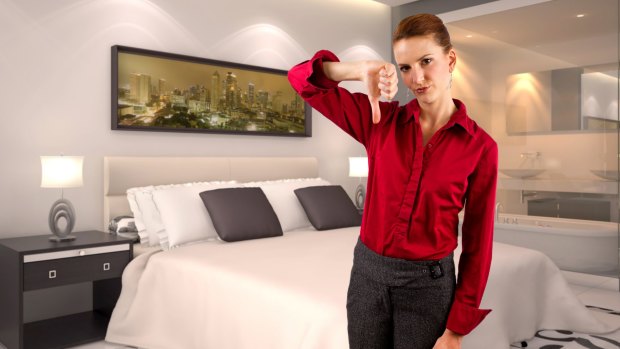
It shouldn't be that hard to get hotel rooms right.Credit: iStock
In the mid-noughties, I returned late to my room in one of London's then new-breed cool boutique hotels, to find the room attendant had helpfully turned on a neon "love" light – it glowed hot pink from all angles under the bed.
However, I could not work out how to turn it off and, too weary to call reception and wait for assistance, I slept (or tried to) with a jumper over my head.
Then there was that hotel room with the shower over a bathtub so deep, you needed rappelling equipment to get in and out safely. (I ended up with a groin injury that took months to heal.)
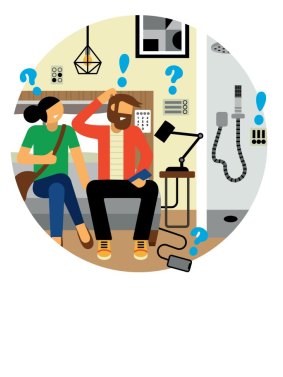
Illustration: Greg Straight
How does this happen?
After all, it doesn't matter whether a hotel room is high-end or budget, leisure or business, designer or utilitarian – it should consider basic human needs.
From towel rails that can barely hold a face flannel, let alone a bath sheet, to lighting schemes that bamboozle even the tech-savvy guest, hotel rooms can frustrate the most easy-going and experienced of travellers.
Before blaming the designers, though, consider that hoary old chestnut – budget. Bronwyn McColl is from architectural firm, Woods Bagot, which has created many successful hotels, including the newly-reworked Intercontinental Sydney, Intercontinental Mornington Peninsula and Amano in Covent Garden and the firm is now overseeing the creation of Six Senses Burnham Beeches in Victoria's Dandenong Ranges. McColl says the best laid-plans can be derailed when money becomes tight.
"Often you're fighting with the fact that you've only got so much money, and you still have to make it work from a brand perspective," she says. "Some of those operational things can get culled because the operator wants other aspects as part of their brand.
"The savvy ones won't cut those operational things because they know that it's a point that guests will just get frustrated with. Some of the less sophisticated ones might hope to get away with it because their brand is quite playful or whatever."
Designers, though, don't escape responsibility, says Nic Graham founder and head of Nicholas Graham & Associates and head designer behind all the QT Hotels, the fashionable Australasian brand that overall manages to successfully balance the playful with the practical.
It's surely their job to try and provide the best solution within a budget. And how much more does a simple light switch system or shower tap controls cost compared with one designed to impress with its gadgetry but which only serves to frustrate?
"There are so many things to think of in a room and all cost money, so we must address the budget closely as well," says Nic Graham, who has been with QT since the brand's inception.
As a partner of P49Deesign, a Bangkok-based international firm focused purely on hotel design, Carl Almeida has conceived the creation of hundreds of hotels in places from Bora Bora to Nairobi, including, most recently, the Sofitel Adelaide and the soon-to-open Sofitel So Melbourne.
His own pet hotel room peeve as a traveller is poor lighting design which he describes as the "biggest sticking point in almost any hotel design because different operators have different visions".
"Some want everything on a touch panel which is quite complicated sometimes," Almeida says. "I'm an old-fashioned kind of guy. Give me a switch that works and I'm happy."
McColl's biggest hotel room bugbear is tech which she believes should be seamless, integrated and go unnoticed.
"You don't want bells and whistles and trickery and something that kind of makes life more complex," she says. "You just want it all to work seamlessly."
But surely we can and should be able to have it both ways: style and functionality in equal measure?
Peninsula Hotels is renowned for their point-perfect rooms – and it's no wonder. The group is about to go from 10 to 12 hotels, with the opening of its London and Istanbul properties. Before construction, examples of each hotel's rooms are built in a warehouse then taken down and reconstructed if needs be, with several personnel, even the group chairman, spending a test night there. Its head of communications, Carson Glover, says: "These rooms are fully functioning, and we test and we retest and we retest, and we retest, until we have ... every aspect perfect before we would move into any construction phase."
Of course, Peninsula is a high-end offering. But should affordable mean unfunctional? We think not.
Inspired by our savvy readers and with insight from the designers themselves, we present the hotel room report card, looking at the elements our hotels can get oh so wrong, alongside their A+ efforts and what we want to see more of.
LIGHTS & TECHNOLOGY
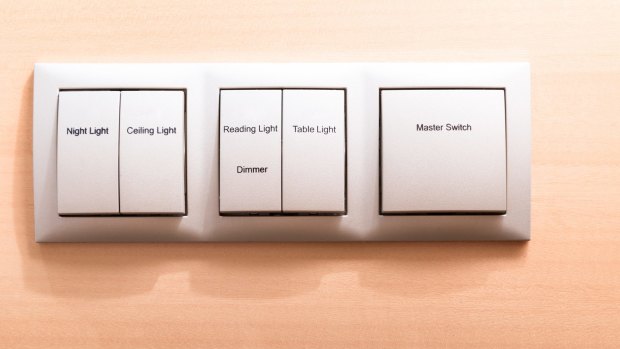
Credit: iStock
Hotel room lighting should be so easy that "you walk in and know immediately the fastest way to turn the lights off", says McColl.
"You don't want to be lying in bed naked, for instance, and realise there's a touchscreen out by the main door with a switch that should turn off all the lights and it also works the blinds. You go out there naked, hit the switch and the blinds come up."
Despite many of us using tablets and other devices for reading these days, effective reading lights by the bed remain a requirement that's all too often unfulfilled.
"Whenever we arrive in a hotel my husband always checks the lights for reading," says Traveller reader Margaret Zarifeh. "Invariably he says the best lighting is in the bathroom. Obviously, most travellers are too busy to read or hotels would have been aware of lighting."
Not so, says Bronwyn McColl, who as both a hotel frequenter and designer (plus reader), believes reading lights will and should continue to be important.
And how often do we encounter weird lighting schemes elsewhere in a hotel room that are impossible to turn off or get right?
A hotel room or suite anachronism is the "master switch" on one side of the bed: fine if you've chosen that side to sleep on, or there are two of you, but annoying if you've made yourself comfy on the other side by the time you discover it.
"Sometimes simple switching is best," says Graham. "Good lighting must first of all be easy to use. It is very expensive to install scene and dimming settings but often necessary for luxury brands.
"I love a moody room lighting setting but good bright light in the bathroom and wardrobe area. I don't want a night light on, but a sensor is good. And I dislike the illuminated switches that can be so bright they keep you awake."
And, speaking of things that keep you awake, standby lights on appliances such as TVs and smoke alarm lights can seem particularly bright in a hotel room, especially when curtains and blinds have blacked out the room.
They're unavoidable, though placement of the smoke alarm right above the bed isn't ideal. Some hotels, rather concerningly, have even found stickers removed from pieces of fruit employed to cover these little lights (we suggest a less extreme solution: travel with an eye mask if light sensitive).
Then there's the TV. Its remote control units should not be hard to decipher, especially if it's on when you first walk into the room. Channel changing should be intuitive. Likewise, air-conditioning should be controllable in the room and should work without you having to bump it up or down to extremes.
Powerpoints should not just be easily reachable, but plentiful and thoughtfully placed by the bed, in the bathroom and desk. They should be international and USB points should be included as no guest wants to bring all of the plugs with them.
Peninsula has an in-house research and development team for tech. One of the first adopters of tablets to control in-room functions, the group's version offers 11 language alternatives. But rooms are also set up for those who don't wish to use it.
It also takes measures to ensure air-conditioning is as quiet as possible. Says Carson Glover: "'Our appliances are internalised into cabinets so there's no hum of a mini-fridge. The carpet is of a much thicker pile, so you don't hear anybody out in the hall. Doors are fastened in a way that they slow up as they are about to latch so they don't make a loud banging noise. We have triple-pane windows on some streets. These are very small things that all equate to why these rooms are so comfortable."
THE BATHROOM
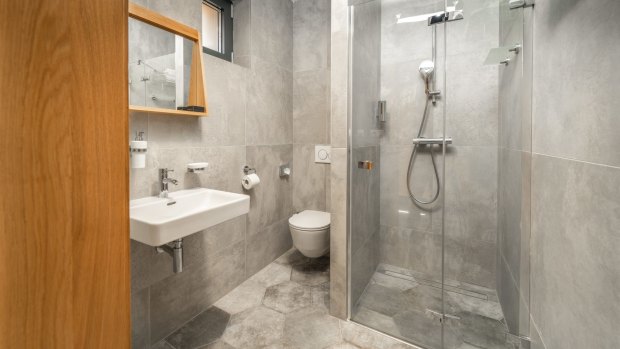
Credit: iStock
No single space has come under heavier fire from Traveller readers than the hotel bathroom.
The biggest issue? Towel rails, or lack thereof, especially galling when a little card suggests you hang your towels to indicate you're happy to reuse them. All well and good if there's somewhere to do so.
Reader, Prue Scott has other issues: "It's the large mirror opposite the bath, shower and toilet. I don't need to see myself in widescreen in any of those settings," she says.
Fellow reader Camelia Sofrone laments hotels with no shelving in the shower. "Not even a tiny soap holder in some," she says, while for room designer Almeida it's all about water pressure.
"I need a hotel room to have a good shower: great showerhead, great water flow," he says. He acknowledges that in certain locations accessing high water pressure may be a problem. But that's what the engineering team is for.
Then there are other shortcomings such as slippery floors. Those polished marble tiles may be delightful but they can also be deadly. Shower controls can also sometimes be either too complex or positioned so the user is unable to turn the shower on without getting wet.
Do you really need two basins? As McColl crucially points out, double the tapware, double the environmental impact. She's an advocate for one big basin with more room for a guest to put their potions and grooming paraphernalia.
That brings us to another hard gripe: lack of space for beauty needs and lack of storage for washbags.
"We think about all those things, to the nth degree because the last thing you want is to find that you create this beautiful bathroom but you can't put anything anywhere, everything gets wet or the water streams everywhere," says McColl.
Like lack of storage, poor vanity lighting is rife. Newsflash: not everyone can shave or apply makeup in the dark. Not does everyone possess 20/20 vision. Would it kill a hotelier to provide magnifying mirrors? (Kudos to those who do.)
Before you complain about the lack of a bath in your hotel room, brace yourself – they're no longer a given and are likely to become less so.
"They can be beautiful but they certainly don't need to be in every room. I think people can choose if they want a room with a bath," says McColl, while Almeida explains that in the past there were certain amenities that a hotel required to qualify for five-star status.
"That remains to a certain degree but mostly it's the quality of a product that determines whether people think it's five stars or not," he says. "There are now bunk beds in quality hotels, for example."
However a bathtub is "an expectation of a level of quality. We know from operator feedback that most guests don't use the bathtub but they get disappointed if it's absent," says Almeida.
"To get away with not including a bath, you've got to enhance your shower experience. So you've got to have multi-heads, perhaps you've got to have, maybe, chromotherapy in the shower and you might have a seat in there."
Peninsula has no plans to get rid of baths in its rooms.
THE BED
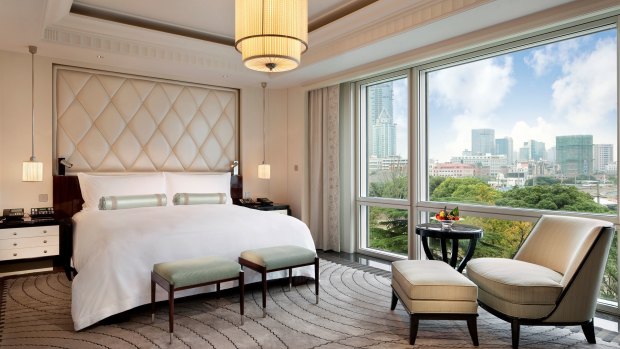
There's nothing more quintessential about a hotel stay than the bed itself. Rock-hard or too fluffy pillows, flimsy covers or no top sheet (a ghastly, increasing trend) are just some of the bugbears. (Bed bugs? Well, they're a whole other conversation.)
We don't always want a pillow menu though they are a nice touch. Just give us a good, middle-ground supportive pillow, not too soft, not too hard, a spare blanket for those who get cold, quality linen that doesn't make our skin crawl and please, a top sheet, for both the comfort of hot sleepers and hygiene purposes.
As for the bedside table, these should have adequate room for personal effects like spectacles, a glass of water, some hand cream.
They must not be cluttered with hotel accoutrements like notepads, leaflets and way-too-big lamps – and it seems obvious that you should be able to turn all lights off from the bed.
Peninsula takes the turn-off a step further. "When you're travelling, you go to bed, you turn the light off and it turns pitch black and you're somewhere foreign," says Carson Glover. "All of our light switches have a dimmer of about 15 to 20 seconds, so you turn the light off, it gradually dims down so the guests can get to where they need to, make sure their phone is where they need it, etc."
Electronic blinds are a nice touch too – how good to be able to press a button and let the sunshine in before your feet have hit the floor?
THE STORAGE
A luggage rack is essential. Bad news though: new-breed hotels often don't have them if their design includes built-in benches and chaise lounges designed to do part-time duty as shelving for bag unpacking. It's a particular peeve among those who travel in pairs.
"Every room we have been in there is only one of them in a double room. I can never work out why this is the case – pardon the pun," says Traveller reader, Rebecca Jones. "If all hotels were designed the same then they'd lose their charm but the inclusion of these would be great."
Peninsula hears you, Rebecca, says Carson Glover. "The luggage area in our dressing rooms is designed for oversized bags so you can have a big suitcase and open it up in plenty of space." You're also provided with seven different types of clothes hangers.
With the advent of the millennial-targeted hotel, the wardrobe – in standard rooms, at least – isn't a given any more, either, and neither are coat-hangers. You might find hanging rails and hooks instead.
But then, what use is the wardrobe full of the hotel's equipment: the safe, iron, ironing board, for instance, with no real room for clothing?
THE FURNISHINGS
The way we travel and stay is evolving, as Almeida explains. Is the height of your in-room chair appropriate to the table so you can eat comfortably? Can you also work at that table?
The whole accommodation market now is much more about a "multi-purpose" way of staying in a hotel. We're not just using the room in one way. We're sitting on a sofa for a bit. We're working on a phone; we're working on an iPad.
"So, all the functional things from 10 years ago, we've had to adapt in simple ways like the height of a coffee table which should double as a workspace, especially when there is no desk," says Almeida.
If there is a desk, it should be functional, not a showcase, cluttered with brochures, compendiums, stationery and advertising materials. And it should go without saying – a guest should not have to clamour under it for powerpoint access.
COFFEE & TEA
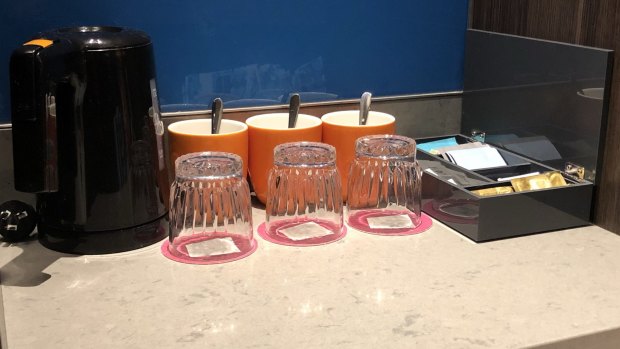
Credit: iStock
Coffee tragics tend to love and appreciate in-room pod coffee machines and understandably so. However, pods present a significant waste problem.
Check the hotel has signed up for pod recycling which some companies operate, though some establishments elect to provide in-room French press coffee makers to circumvent those pods and some use compostable less-mess bags.
Whichever way it's delivered, quality in-room hot beverage choice should be standard. There's no excuse for sachets of instant coffee today, especially above certain price points. Our readers also want a decent tea selection, a quality kettle and fresh milk.
"Powdered stuff or tiny capsules (of UHT) is not good enough," says Heather Barker. "I recently stayed at several hotels in Australia and Europe and only one provided a small bottle of milk.
"My solution is to ask at reception for a jug of milk in the fridge. lf you have to wait for it take a cupful from the breakfast area or buy a small bottle at the nearest shop and keep it in the fridge."
THE HOTELS THAT TEND TO GET IT RIGHT
BEST FOR BEDS
This belongs to the upscale but relaxed Voco chain, part of the giant InterContinental group. It is temperature-adjusting, luxurious and guilt-free. Along with the near-perfect pillows, the duvet is filled with recycled polyester. See vocohotels.com
BEST FOR RACKS
Traditional mega-brands such as the InterContinental and Sheraton-Marriott are more likely to provide luggage racks as a matter of course than some of the more trendy youth-driven brands. Want two luggage racks? Ask the front desk. See ihg.com; sheraton.marriott.com
BEST FOR BATHROOM LIGHTING
For thoughtful bathroom lighting, the five-star Fairmont Singapore, part of the giant French Accor group, tends to get it right. In its rooms you'll find large mirrors with perimeter lighting and a shaving or makeup mirror with lighting plus an overhead light. See fairmont.com
BEST FOR FURNISHINGS
The new designer Kimpton Margot Sydney hotel has entry-level rooms with either a chaise lounge or a sofa to kick back with a tablet and a small table where you can enjoy a coffee or sit at to work on a laptop. There's also a desk for some serious toil. See kimptonmargotsydney.com
BEST FOR COFFEE & TEA
The boutique-style, heritage-minded Warehouse Hotel Singapore uses drip coffee bags from local brand Hook, as well as bespoke ceramic coffee and tea mugs made by Singapore's Mud Rock. We'll drink to that. See thewarehousehotel.com
Sign up for the Traveller newsletter
The latest travel news, tips and inspiration delivered to your inbox. Sign up now.